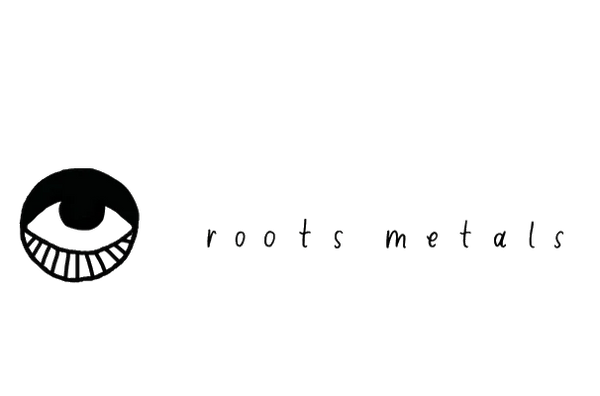
A BRIEF BACKGROUND
In the immediate aftermath of World War II, the USSR went through great lengths to deny the Jewish and Romani-specific nature of the Holocaust. Because antisemitism was all but synonymous with Nazi Germany, the Soviets enacted a massive “anti-Zionist” propaganda campaign instead. In the early 1950s, Stalin, who’d long expressed antisemitic viewpoints, developed a plan for the suppression, forced displacement/ethnic cleansing, and possible genocide of the Jewish People in the Soviet Union. The plan is known as the Doctors’ Plot (read my post THE DOCTORS’ PLOT). Because of Stalin’s sudden death, however, the full plan never came to fruition.
Even after Stalin’s death, life for Jews in the USSR was impossible. Most infamously, the USSR heavily suppressed Jewish cultural and spiritual life, stripping many Jewish families of thousands of years’ worth of history. For example, though not officially illegal, Jews were punished for speaking or studying Hebrew or participating in religious traditions. Jews were not allowed to assimilate into Soviet society due to their ethnic background, but they were also criminalised if they tried to hang on to their ancient traditions, ultimately resulting in a catch-22. Oftentimes, Jews were imprisoned under false pretences, with the Soviet government accusing them of “Zionist crimes.” People with Jewish last names were subject to highly restrictive university quotas or banned from performing certain jobs.
EXIT VISAS
Following the 1967 Six-Day War between Israel and its Arab neighbors, the oppression of Soviet Jewry drastically intensified. Desperate for a better life, thousands of Soviet Jews applied for exit visas, mostly to Israel. However, the Soviet regime almost always denied them such visas, citing bogus excuses, claiming that, sometime in the past, these Jews had been privy to information vital to Soviet national security, and, as such, allowing their emigration would put the Soviet Union at risk. These Jews came to be known as “refuseniks.”
During this period, Soviet Jews were portrayed as traitors or agitators. Requesting exit visas was considered an act of treason. In order to apply for exit visas, Jews first had to quit their jobs; however, this put them at risk of being accused of “social parasitism,” which was considered a crime. After having their visas refused, Jews were also then prevented from obtaining new work. Then, this joblessness was criminalised. Soviet Jews were stuck in an impossible living situation.
DYMSHITS-KUZNETSOV HIJACKING
In 1970, 16 refuseniks, organised by a previously-imprisoned Soviet dissident, Eduard Kuznetsov, bought all the seats to a regional flight, under the pretence of attending a wedding. Their plan was to throw the pilots out after the first stop and fly the plane to Sweden.
However, upon arrival to an airport near Leningrad, the MVD arrested all of the refuseniks, sentencing Kuznetsov to capital punishment. The others were accused of high treason, also punishable by death.
As a result of heavy international pressure, however, the death sentences were lifted, though all were imprisoned.
PROTESTS
Alerted to the situation, Jews around the world protested for the rights of Soviet Jews to emigrate. In October of 1963, Moshe Decter, a Jewish writer championing the Soviet Jewish cause, got a group of people (including Martin Luther King Jr.) and formed the American Jewish Conference on Soviet Jewry. Their first protest took place in 1964. American Jewish youth, in particular, passionately supported the cause. By 1987, 200,000 people protested on behalf of Soviet Jewry in Washington DC.
Meanwhile, in the Soviet Union, the regime heavily cracked down on refusenik activism, arresting Jews for studying Hebrew and the Torah. In 1976, 13 Soviet refuseniks appealed to the Soviet government for their right to emigrate. In response, they were beaten by the police and some were arrested. In 1978, two Soviet refuseniks that had been denied the right to emigrate for 8 years stood on the 8th story balcony of their building, holding a banner that read, “Let us go to our son in Israel.” Others protested in similar ways. They were all arrested, some of them sentenced to hard labor in Siberia.
ACCUSATIONS OF PROPAGANDA
As is often the case, the Jews of the Soviet Union and Jews in other countries that protested on behalf of Soviet Jewry were accused of pushing American propaganda. The Soviet government and Soviet sympathizers (generally those on the far left) commonly used the phrase “and you are lynching Black people!” implying that Americans had no place to talk about human rights in the Soviet Union. During and after the 1967 Six-Day War, refuseniks and Jews sympathetic to their cause were also accused of pushing Israeli propaganda.
In 1965, the left-wing Israeli newspaper Haaretz sent Holocaust survivor, writer, and (later) Nobel peace prize winner Elie Wiesel to investigate whether the reports regarding the conditions for Soviet Jewry were true or false. I highly recommend reading his account of the trip, “The Jews of Silence.”
INTERNATIONAL PRESSURE
What began as a small Jewish grassroots movement culminated in tremendous international pressure for the Soviet Union to free Soviet Jewry.
One of the biggest sources of international pressure in favor of refuseniks was the Jackson-Vanik amendment to the 1974 Trade Act. According to the act, the United States was restricted from trading with non-market economies that infringed on human rights. This heavily affected the Soviet Union.
In response to international pressure, 150,000 Jews were permitted to leave the USSR starting in 1971. In the mid-1980s, thanks to Gorbachev’s perestroika and glasnost policies, the USSR relaxed its position on Jewish emigration.
Immediately upon the collapse of the USSR, 1.6 million Jews left, 900,000 of them making aliyah to Israel.
For a full bibliography of my sources, please head over to my Patreon.
